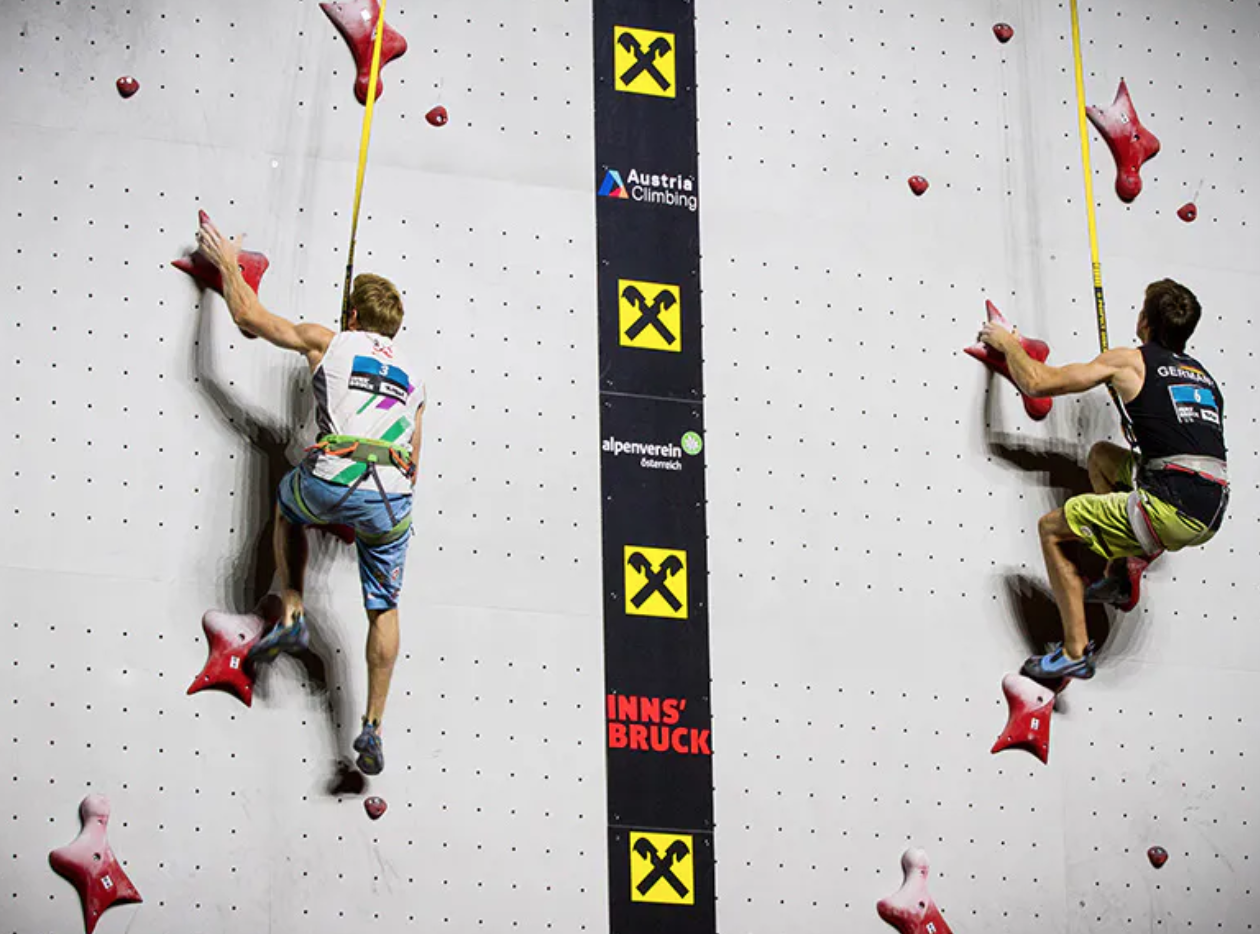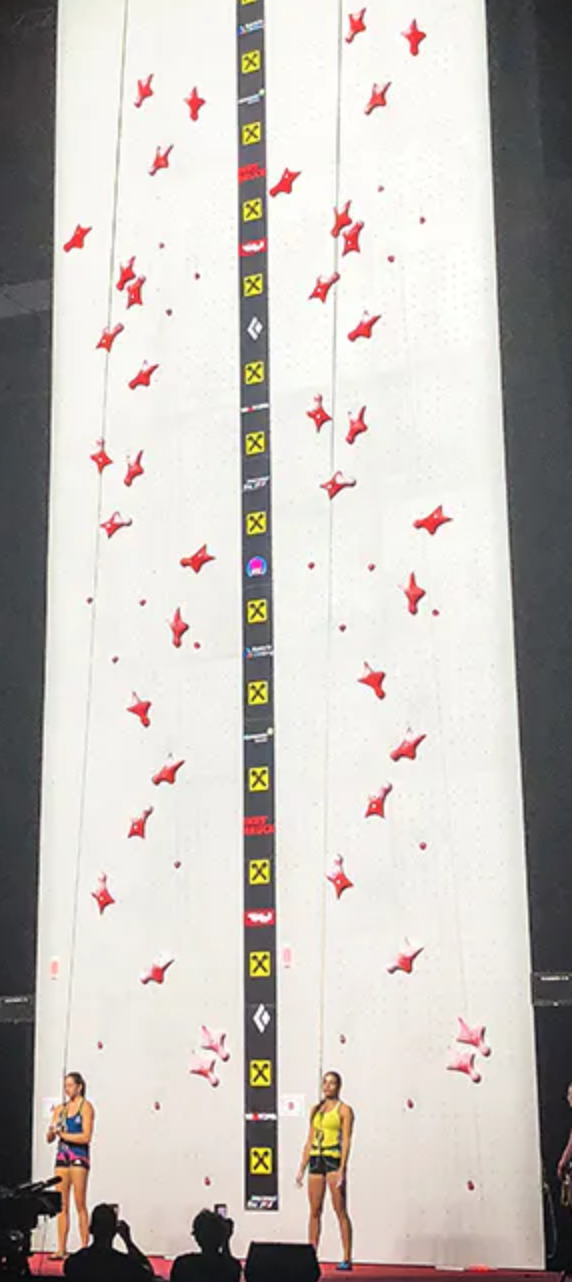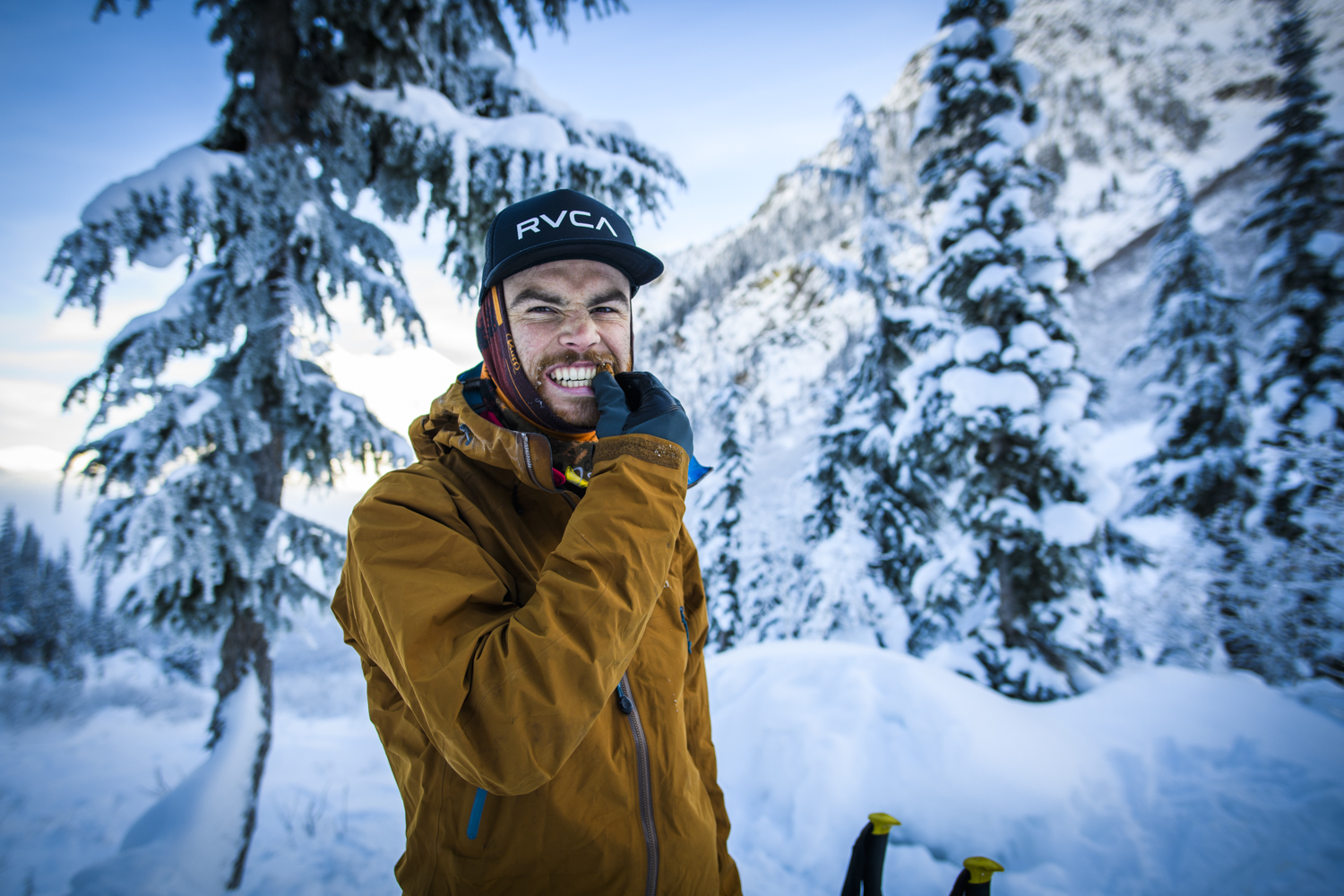A Guide to Olympic Speed Climbing

Ripped clothing, long hair, dented cans of tuna... these were the typical american roots of rock climbing in the late 1950s. Rock climbing, up until the past decade or so was considered very much a fringe activity. Sure, in popular areas like Yosemite, Red Rocks, Squamish and Skaha you'd find a wide variety from dirtbag to doctor, but it didn't have the mainstream appeal that it does today.

Now, rock climbers have become professional atheletes, that hold sponsorships for clothing, gear, energy bars, and sports drinks. Not only that, but with the rise in popularity of gym climbing, competition based formats have exploded for their accessibility, ease of learning, and direct ability to compare and change.
While the essence of Bouldering and Sport climbing are easy to grasp, the speed climbing format is one which isn't popular in North American culture, even amongst climbers.

For starters, the route is completely standardized, every climber on the globe practices on the exact same route. It is 45 feet tall, has 20 handholds and 11 footholds, and is 5 degrees overhung.
Over time, this standardization has produced standard beta (movement) practices, standard starting positions and finishing throws, and more.
Check out Climbing.com's article here









